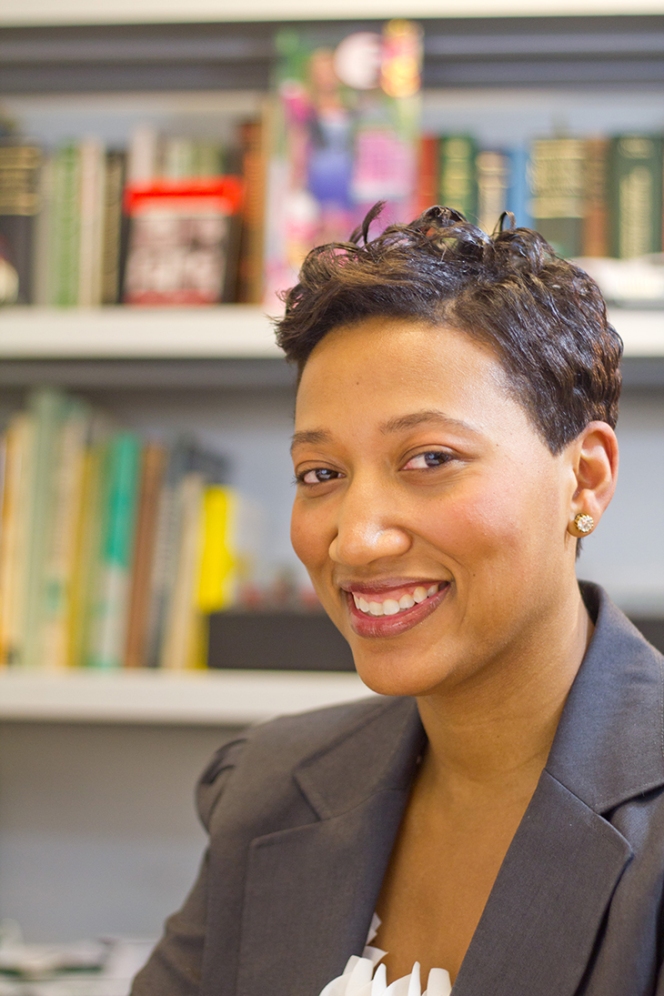Your Cart is Empty
Customer Testimonials
-
"Great customer service. The folks at Novedge were super helpful in navigating a somewhat complicated order including software upgrades and serial numbers in various stages of inactivity. They were friendly and helpful throughout the process.."
Ruben Ruckmark
"Quick & very helpful. We have been using Novedge for years and are very happy with their quick service when we need to make a purchase and excellent support resolving any issues."
Will Woodson
"Scott is the best. He reminds me about subscriptions dates, guides me in the correct direction for updates. He always responds promptly to me. He is literally the reason I continue to work with Novedge and will do so in the future."
Edward Mchugh
"Calvin Lok is “the man”. After my purchase of Sketchup 2021, he called me and provided step-by-step instructions to ease me through difficulties I was having with the setup of my new software."
Mike Borzage
The Edge:Damon Leverett on Diversity in Architecture
December 09, 2014 5 min read
Novedge: Tell us a bit about who you are and what you do
Damon Leverett: My name is Damon Leverett and I am a licensed Architect, Designer and Artist practicing for over 25 years. Originally from Detroit, I spent 8 years in Phoenix working primarily on mixed use development, institutional and healthcare projects. I also spent time in academia as a Visiting Lecturer in Design at the University of Illinois Urbana-Champagne and an Adjunct Lecturer at Lawrence Technological University.
Currently, I am working at the American Institute of Architects in Washington, DC where our team of seven is managing a deep portfolio of resources and programs that support our emerging professional and diverse membership.
Novedge: As Managing Director of Diversity and Emerging Professionals Engagement for AIA National you are in a unique position to see trends and challenges facing young architects today. What have you learned in your current role and what surprised you the most?
Damon Leverett: I am not sure anything has struck me as overly surprising over the years but I am amazed now at how we are designing buildings in China from the US. What is surprising is the scale and volume of the projects, particularly in housing, that China is contemplating. It is designing ten blocks filled with buildings at a time rather than just designing one building at a time.
Novedge: What are some of the most important things you would like students to take with them from architecture school to their professional life?
Damon Leverett:I truly feel that Architecture education provides a well-rounded arts and science foundation which prepare students for licensure or a related field should the student choose a different path. When I work with my students I see them as more than just future architects but as future leaders.
There are so many things we want students to focus on so it is difficult to single out an issue. Obviously this new generation of graduates will participate in an unprecedented global and data driven economy where significant concerns of sustainability, climate change and system efficiency will dominate their approach to practice.
I hope that young architects will not only engage in lifelong learning related to the profession but also garner a deep understanding for economics, science and the digital domain so that they can be influencers in the changes that can affect the profession from the inside outward.  Image by M00by under CC License.
Image by M00by under CC License.
Novedge: What are your favorite blogs about Architecture that are still relatively unknown?
Damon Leverett: It is hard to imagine that there would be an unknown blog. I do follow Randy Deutsch from the University of Illinois on his blog BIM and Integrated Design. However, whenever there is a hot topic in Architecture, I am quick to seek out Archinect to get a broad range of opinions related to our profession.
Novedge: Architecture as a profession is changing a lot: what would you like to see happen in the next few years?
Damon Leverett: I have recently sought to reflect on this topic in a series of lectures I have done on the history of drawing and drafting. In my career I have seen far reaching changes in the way we create design and construction documents. The way architects document their work, collaborate in teams and deliver projects to any region of the world represent the most significant changes I have seen in the past three decades.
What will be different this time around is that change is happening at a faster rate. The “blueprint” has been around for more than 150 years, whereas the shift from hand drafting to two-dimensional CAD to three-dimensional BIM has only happened within the last 30 years. Web 2.0, three dimensional modeling and the cloud seem to be converging with new programs on the horizon such as Flux Metro. The next generation of design assist is poised to enter the scene soon.
If you ask what I would like to see, it would be advances in computing hardware. Ironically, when I was younger I had a decent desktop computer with very few software choices. Today there is a wide variety of 3D modeling, BIM and computer visualization offerings. The industry has addressed the world of mobile technology the past few years but many who rely on high-end desktop solutions at a reasonable price would probably be delighted to see some leaps in the desktop realm. If you are in visualization or BIM and your current desktop computer was four times faster in processing and graphics speed with ten times the memory for the same cost as a comparable unit today; what would that be worth in terms of what you could accomplish creatively?  Photo credits Ralph Roletschek
Photo credits Ralph Roletschek
Novedge: How can architects interested in diversity in the profession become more involved?
Damon Leverett: While the AIA is working on national programs and events through the Diversity and Inclusion Council, one way Architects can get involved in supporting diversity is through the pipeline to architecture in K-12 and other youth programs. The interaction with young people to share the architecture experience is best achieved at the local level where AIA chapters, schools, universities and community groups can work together. In 2014, I visited K-12 architecture experiences in Philadelphia, Washington DC, Detroit and Atlanta.
AIA Atlanta has a fantastic program where local architects volunteer as instructors in after school architecture classes with 10-12 year-olds. Architects working with schools to provide positive perspective of our profession, particularly in urban cities will lead to a more diverse academic population and ultimately the profession as a whole. Some feel diversity and inclusion starts at age 20, when it really starts at age 10.
Novedge: Can you tell us a bit about your upcoming projects at the AIA?
Damon Leverett: The AIA Women Leadership in Architecture Summit is set for September 17-19, 2015 in Seattle. The event will gather architecture firm principals, educators, clients, designers, environmentalists, and innovators in an intimate setting to discuss the challenges and opportunities for women practicing architecture today. This is the third in a series of conferences scheduled bi-annually, focused on mentoring and leadership guidance.
The AIA Diversity in Architecture Survey will launch on January 5, 2015. Building upon the last effort conducted in 2005, the survey will offer the AIA Diversity and Inclusion team critical intelligence about the state of the profession. The new survey has two main objectives. It will create a stable data set surrounding ethnicity and gender that will allow for periodic assessments and improved trend analysis. It will also examine the careers of diverse architects—from college to firm culture—to see how their experiences impact their professional choices. This year’s survey includes participation with the profession’s collaterals: ACSA, AIA, AIAS, NCARB, NAAB, NOMA, CCCAPand others.
If you want to keep informed on the survey and the many other initiatives of the American Institute of Architects check out their website and follow them on Facebook.
And don't forget to follow Novedgeon Twitter for more news and discussions on Architecture.
Related articles
Also in NOVEDGE Blog

Enhance Your Designs with VisualARQ 3: Effortless Geometry Extensions for Walls and Columns
April 30, 2025 8 min read
Read More
MecSoft Unveils RhinoCAM 2025 and VisualCAD/CAM 2025 with Enhanced Features
March 08, 2025 5 min read
Read MoreSubscribe
Sign up to get the latest on sales, new releases and more …






